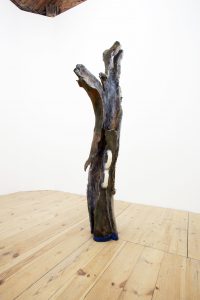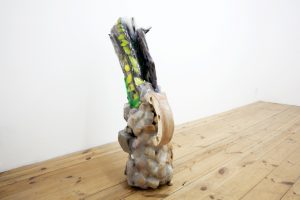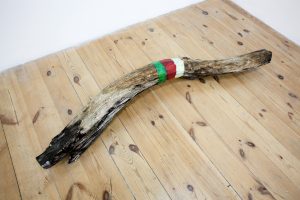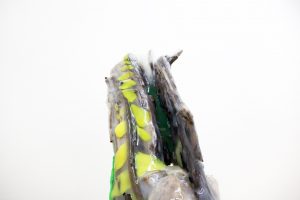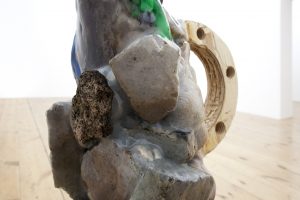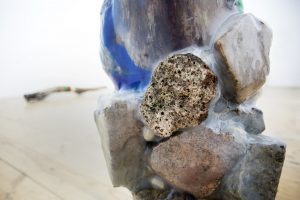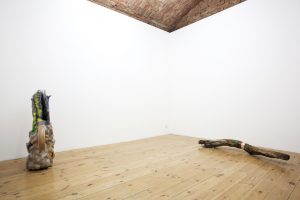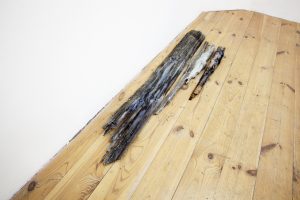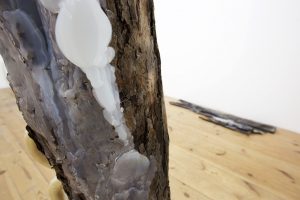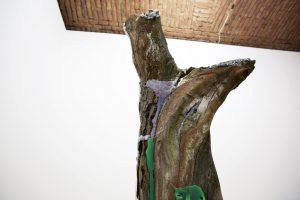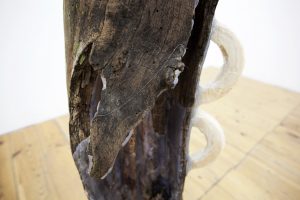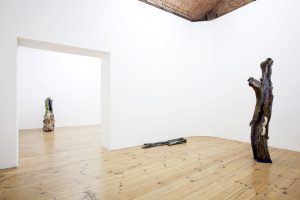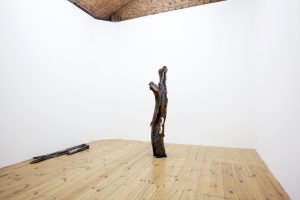22/3 – 19/4 2019
Our conscious actions are just a drop in the ocean of unconscious processes that we do not control or recognize, that we fear and misinterpret. The nervous system and the functioning of our brain create a restless type of human consciousness that is universally shared by all of mankind. The specific, original content of the mind of the individual is something else altogether – our thoughts, memories, and imagination… our creativity and how it is expressed. Generally speaking, creative abilities show a willingness to push the boundaries and break the rules. In the case of Jan Turner (*1971), this willingness is reflected by the sky-high optimism with which, in his most recent exhibition, he tackles constants such as the flow of time and the laws of logic or probability. In his surprising and original works of art, Turner tries nothing less than to change our entire universe for the better. His (quite consciously) chosen instrument for this difficult task is a stick – specifically, pieces of rotting wood.
The stump symbolizes that part of reality that we try to deny or suppress, that unsettles us in its ambiguity and its unclear functions, and from which we generally avert our eyes. It is a disfigured and dysfunctional part of the body, an evolutionary dead end (which basically is the great majority of them). On a broader level, it contains something like the reified essence of uselessness, ruin, and oblivion. With just a simple change of perspective, however, things that seem entirely inconsequential may prove to be of absolutely fundamental importance: Despite everything, the stump is an integral part of reality without which our lives and our image of the world around us are incomplete. This deficit is the rudimentary source of the many conflicts and misunderstandings that have accompanied our species throughout history and that influence the life of each and every individual – including on the personal level, through the discord and conflict that we carry within us and that we experience with one another, face-to-face with the reality in which we are forced to exist.
In these works, Turner – who has never compromised the maximalist demands he places on artistic production as a means for the ongoing transformation of the viewer and himself, and who, perhaps precisely for this reason, has existed more on the margins of art-going public’s interest – takes on the role of a kind of family doctor attempting to cure and heal a deep gaping wound in our picture of reality. With touching meticulousness, making use even of pleasantly decorative tendencies, he reintegrates what had been suppressed and reconciles extreme opposites. He shows us the self-importance and limits of our pragmatic way of thinking, and the frailty of our categorical judgments of a world in which we cannot find peace and happiness if we merely cut it with the knife of our prejudices and pseudo-universal dualistic concepts.
curated by Pavel Švec
